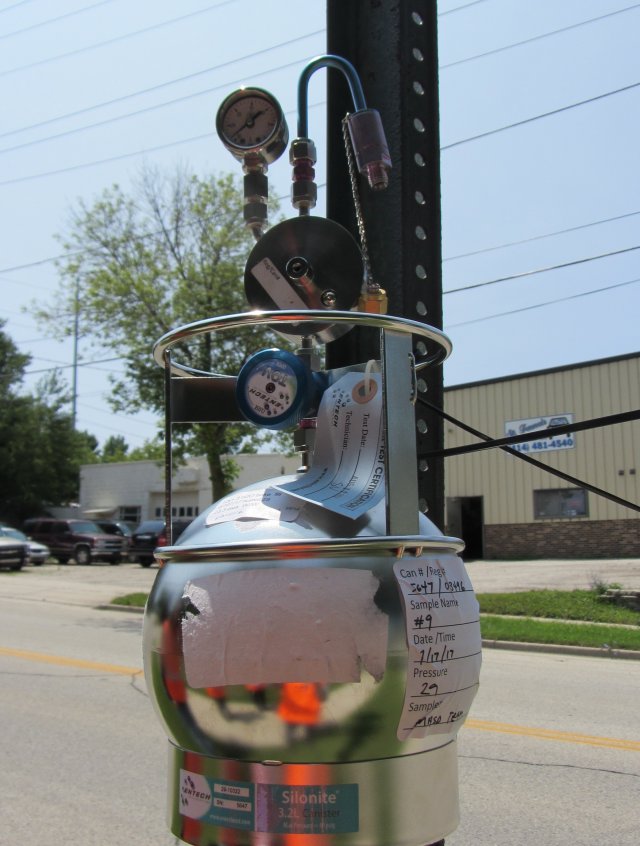EPA Investigating Milwaukee Company for Potential Environmental Violations
On November 27, 2017, EPA issued Notices of Violation to three facilities owned and operated by Container Life Cycle Management, LLC, also known as Mid-America Steel Drum Co., alleging violations of the Resource Conservation and Recovery Act and the Clean Air Act.
U.S. Environmental Protection Agency is investigating three industrial facilities in Milwaukee, Oak Creek and St. Francis, Wis., for potential environmental violations. The three facilities are owned and operated by Container Life Cycle Management LLC, but also operate with the name Mid-America Steel Drum Co., (MASD). EPA is investigating these facilities in response to public complaints and Milwaukee-area news reports. Other state and federal agencies are also investigating the facilities, including the Wisconsin Department of Natural Resources, the federal Occupational Safety and Health Administration, and the U.S. Department of Transportation. EPA is investigating each of the MASD facilities to determine compliance with environmental regulations.
MASD reconditions industrial containers. The three facilities in the Milwaukee area accept used containers such as drums or totes from other companies and process them either for disposal or reuse. MASD has capabilities to wash or burn out the residual
chemicals inside the containers. After processing, MASD may paint the containers and inspect them for defects. The containers that pass inspection are then sold to customers. Containers that do not pass inspection are discarded or sent to a steel or plastic recycler.
Since early 2017, EPA has conducted multiple site visits of the MASD facilities in Wisconsin. These site visits were conducted to evaluate the container reconditioning processes, evaluate compliance with applicable environmental regulations, and to collect different types of samples inside and outside the facilities for analysis.
Soil Sampling
In July 2017, for example, EPA collected soil samples in the area surrounding the MASD facility in St. Francis. EPA took soil samples to determine if metals had contaminated the ground around the facility. Analysis of the soil samples indicates that metals were detected at concentrations that are typical for the Milwaukee region and do not present an immediate concern.
In addition, EPA collected soil samples on May 1, 2018 at the tractor trailer storage yard at the St. Francis facility and received the results of that sampling event on July 18, 2018. Based on its initial review of the sampling results, EPA does not believe there is any immediate threat to human health or the environment requiring a federal cleanup response. EPA is working with the Agency for Toxic Substances and Disease Registry and the Wisconsin Department of Natural Resources to further assess the data.
Air Sampling
EPA also collected air sampling in the area surrounding the St. Francis facility in May, July, and August 2017, as well as in January 2018. The air samples were collected in response to resident complaints of visible and smelly emissions from the facility. Analysis of these air samples, does show the presence volatile organic compounds associated with industrial activity. EPA is working with the federal Agency for Toxic Substances and Disease Registry to analyze the air samples and determine if the emissions pose a risk to human health. ATSDR is a federal public health agency.
Agency for Toxic Substances and Disease Registry Potential Health Impact Review
On July 5, 2017, EPA requested that the Agency for Toxic Substances and Disease Registry (ASTDR) review air and soil samples collected around MASD facility in St. Francis to draw conclusions about potential health impacts. On May 23, 2019, ATSDR completed its review and provided a letter summarizing (PDF) (25 pp,993K, About PDF) its conclusions:
1) Residential exposures to contaminants in surface soil are not expected to harm people’s health.
2) Worker exposures to surface soil contaminants at MASD are not expected to harm their health.
3) Air monitoring data were not adequate to assess health risks associated with breathing contaminants released from MASD. The primary limitation of the air data set is its inability to capture the day-to-day variability in air emissions from MASD, given that the facility handles drums contaminated with a wide range of chemicals. ATSDR and Wisconsin Department of Health Services (WDHS) conducted a screening analysis to determine whether acute or chronic health comparison levels were exceeded on the days that EPA performed air sampling. MASD has since installed a pollution control device that is expected to significantly reduce air emissions.
4) Nuisance odors have been a persistent issue for residents near MASD, as documented by St. Francis Health Department, WDHS, and regulatory agencies. EPA’s air modeling indicates the likelihood that maximum contaminant levels near MASD were above odor thresholds. Air modeling was based on a single emissions testing event and does not necessarily reflect the highest long-term exposures near MASD and associated odors and potential health impacts.

